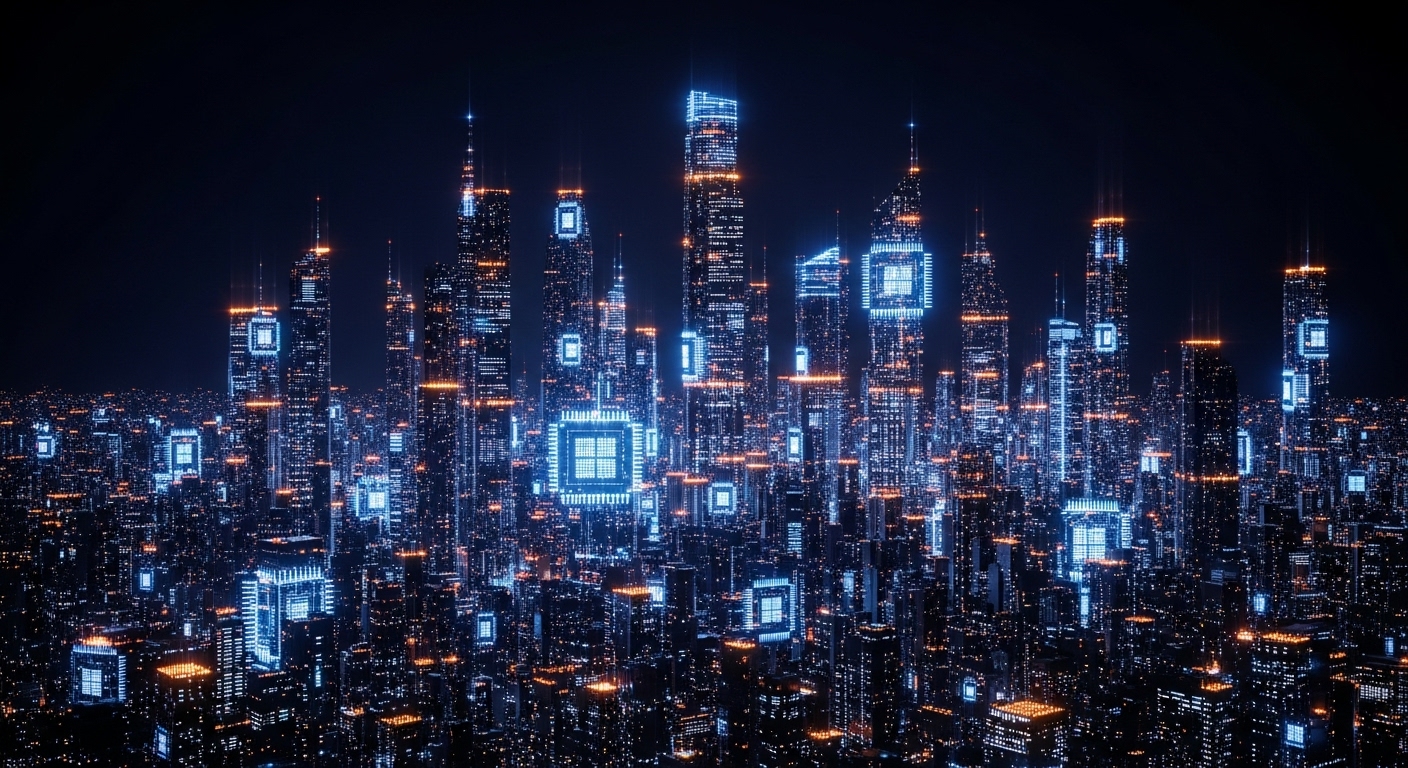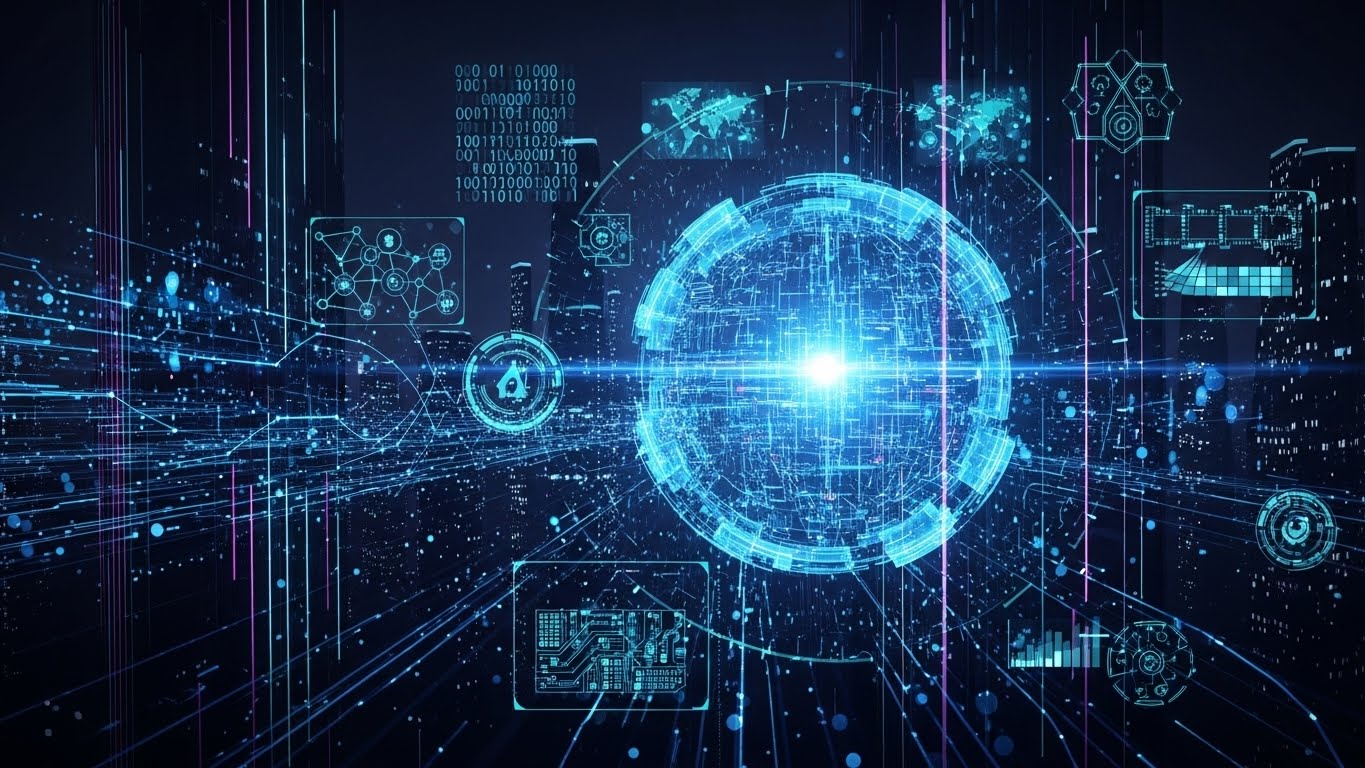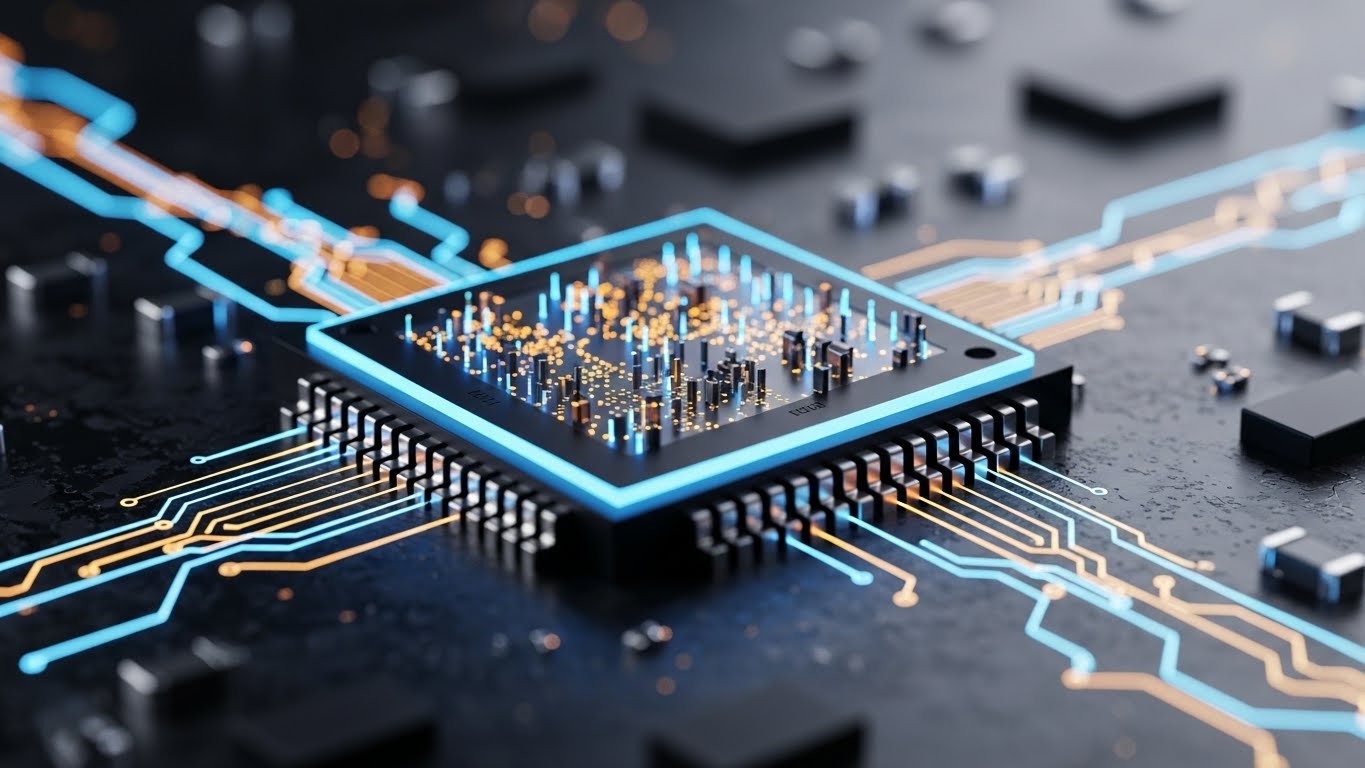Introduction to the Age of Technology
We live in an era where technology is not just a tool but a foundation on which modern life rests. Every day, billions of human lives are influenced by digital systems, smart machines, and interconnected networks. From the moment we wake up to the sound of a smart alarm to the time we fall asleep after scrolling through digital screens, technology surrounds us. It has transformed how we communicate, work, travel, learn, and even how we think. In this blog, we explore the fascinating world of technology, its evolution, major innovations, current trends, potential future, and impact on humanity and society.
The Evolution of Technology from Past to Present
Technology did not appear overnight. It has been a continuous journey of innovations, mistakes, discoveries, and breakthroughs. Early humans using stones and wooden tools marked the beginning of technological development. The invention of fire, wheels, and basic agricultural tools laid the foundation for civilization. As time progressed, human intelligence shifted from survival to comfort and innovation. The Industrial Revolution brought machines and steam engines, replacing manual labor and introducing mass production. Then came electricity, telephones, airplanes, and automobiles.
The 20th century further accelerated innovation with computers, satellites, and modern communication systems. With the invention of the internet, technology took a leap into a new dimension. Today’s technology is fast, connected, smart, and everywhere. We have smartphones more powerful than old supercomputers and artificial intelligence capable of thinking like humans. The story of technology is the story of human ambition and creativity.
The Rise of the Digital Era
The digital era began when data started to shift from paper to screens, from physical records to digital files. The creation of personal computers marked the entry of technology into homes. People began typing documents, playing games, and learning new skills on computers. The internet added another layer of transformation by connecting computers around the world. Suddenly, information could travel across continents in seconds.
Emails replaced letters, websites replaced libraries, and online chats replaced physical meetings. Now digital platforms control shopping, banking, education, healthcare, and entertainment. Everything from ordering food to attending school can be done using a digital device. The digital era made the world smaller, faster, and smarter.
Smartphones The Pocket Revolution
Smartphones are one of the most influential inventions of the modern age. These small devices combine the power of a computer, camera, GPS, and telephone into one. Earlier mobile phones were used only to make calls and send texts, but modern smartphones can take high-resolution photos, record 4K videos, access the internet, play advanced games, and control smart home devices.
Touchscreens made smartphones easy to use while mobile operating systems offered millions of applications for all purposes. Today, smartphones are a lifeline for businesspeople, students, doctors, artists, and almost everyone. Whether it is tracking health, managing money, studying online, or capturing memories, smartphones have become the center of modern human life.
The Internet The Global Connection
The internet is the backbone of modern technology. It works as a digital highway where information travels across millions of devices. The internet has changed how humans learn, work, and communicate. Search engines help us find answers in seconds. Social media platforms connect friends and families across continents. Video conferencing allows people to attend meetings or classes from their homes.
Cloud computing allows us to store data online instead of physical drives. Entertainment platforms enable us to stream movies, music, and games without downloading them. The internet is not just a technology but an ecosystem where humans interact virtually. It has become essential like air, water, and electricity.
Artificial Intelligence and Machine Learning
Artificial Intelligence is the ability of machines to perform tasks that normally require human intelligence. Machine learning is a part of AI where machines are trained to learn from data. These technologies power digital assistants, language translators, self-driving cars, facial recognition, and recommendation systems.
Artificial Intelligence analyzes large amounts of data to understand patterns. It helps doctors diagnose diseases, helps banks detect fraud, and helps businesses understand customers. AI can write stories, compose music, and even generate images. It is changing industries like healthcare, education, transportation, and finance. Machine learning models are improving daily and becoming more accurate and powerful. AI is not just an invention but a revolution.
The Role of Robotics in Modern Technology
Robots are machines designed to perform tasks automatically. They can be simple mechanical arms in factories or complex humanoid machines that walk, talk, and think. Robots are widely used in industries to assemble products, weld metals, and package goods. They are also used in hospitals to assist doctors during surgeries.
In space missions, robots explore planets where humans cannot go. In homes, robot vacuum cleaners clean floors, while robotic lawn mowers maintain gardens. With artificial intelligence, robots are becoming smarter, more flexible, and more independent. They can recognize voices, understand commands, and learn from experiences.
Cloud Computing and Data Storage
Cloud computing allows users to store and access data on remote servers instead of local computers. This means you can access your files from any device anywhere in the world. Cloud services provide storage, backup, and processing power to companies and individuals.
Businesses no longer need to buy expensive hardware. They can rent cloud services and scale them according to their needs. Cloud computing also supports remote work and global collaboration. Teams from different countries can work on the same project in real time. Cloud technology has made data management easier, safer, and more efficient.
Cybersecurity and the Importance of Data Protection
With the increase in digital technology, the risk of cyberattacks has also increased. Hackers try to steal personal data, financial information, and confidential documents. Cybersecurity is the practice of protecting systems, networks, and data from digital attacks.
Strong passwords, multi-factor authentication, encryption, and firewalls are used to secure systems. Companies invest in cybersecurity to protect customer information. Governments use cybersecurity to protect national security and digital infrastructure. Cyber awareness is necessary for everyone because one mistake can lead to data loss or identity theft.
Blockchain Technology and Digital Transactions
Blockchain is a technology that stores information in blocks linked together like a chain. Once a block is added, it cannot be changed, which makes the system secure and transparent. Blockchain is popularly used in digital currencies, but its applications are much wider.
It can be used for voting systems, supply chain management, medical records, and secure digital contracts. Blockchain removes the need for middlemen in financial transactions. It increases trust between parties and reduces fraud. Many industries are exploring blockchain to improve efficiency and transparency.
The Future of Work and Remote Technology
The way we work is changing. Thanks to technology, people can work from home or anywhere in the world. Remote work has become common in many industries. Companies use digital tools for communication, project management, and data sharing. Video calls replace physical meetings and online platforms replace offices.
Remote technology has allowed people to balance work and family life. It has also provided opportunities for people who cannot relocate to big cities. The future of work may include hybrid models, where employees work both from home and office. Technology continues to reimagine work environments and productivity.
Education in the Digital Age
Education has transformed with digital tools. Online classes, digital libraries, and interactive learning platforms make education more accessible. Students can learn from home using laptops, tablets, or smartphones. Teachers use virtual classrooms to deliver lessons.
E-learning provides flexibility as students can study anytime. Educational apps offer quizzes, videos, and interactive content to make learning fun and easy. Technology has made education equal for students in remote areas. It also supports lifelong learning for adults and professionals.
Healthcare and Medical Technology
Technology has revolutionized healthcare. Machines like MRI, CT scan, and ultrasound help doctors diagnose diseases accurately. Wearable devices monitor heartbeat, blood pressure, and sleep patterns. Telemedicine allows patients to consult doctors online without visiting hospitals.
Robotic surgery helps doctors perform complex operations with precision. AI helps predict diseases by analyzing medical data. Medical research has accelerated with advanced computer models. Technology has made healthcare faster, safer, and more efficient.
Transportation and Autonomous Vehicles
Transportation has evolved with electric cars, high-speed trains, and smart traffic systems. Autonomous vehicles are cars that can drive themselves without human control. They use sensors, cameras, and AI algorithms to navigate roads.
Electric vehicles reduce pollution as they do not use fuel. Smart traffic systems reduce traffic jams by controlling signals using sensors. Hyperloop and flying taxis are future transport technologies being developed. Transportation technology aims to make travel faster, cleaner, and safer.
Smart Homes and the Internet of Things
Smart homes use technology to automate everyday tasks. Devices like smart lights, thermostats, and security cameras can be controlled using smartphones or voice commands. The Internet of Things connects various devices to share data and work together.
Smart refrigerators can tell you when food is expiring. Smart televisions can stream content from the internet. Smart speakers play music, set reminders, and answer questions. Smart homes increase comfort, save energy, and improve safety.
The Influence of Social Media and Digital Communication
Social media has changed the way people share information and communicate. Platforms are used to upload photos, write thoughts, and connect with friends. Businesses use social media to advertise products and interact with customers. Celebrities and influencers use it to reach millions of followers.
Digital communication like emails, messaging apps, and video calls has replaced letters and landline phones. While social media connects people, it also has challenges like misinformation, cyberbullying, and addiction. Responsible usage is necessary to maintain mental health and online safety.
Gaming Technology and Virtual Worlds
Gaming is no longer just a hobby but a multi-billion-dollar industry. Modern games use advanced graphics, realistic physics, and artificial intelligence. Online multiplayer games allow players from different countries to play together.
Virtual reality creates immersive 3D worlds where players can move, interact, and experience adventures. Augmented reality adds digital objects to the real world using cameras and screens. Gaming technology is also used in education, military training, and medical simulations.
Environmental Technology and Sustainable Innovations
Technology is also being used to protect the environment. Renewable energy sources like solar, wind, and hydro power reduce dependence on fossil fuels. Electric vehicles reduce air pollution. Smart grids manage electricity more efficiently.
Recycling technologies turn waste into useful materials. Water purification systems provide clean drinking water. Environmental sensors monitor air quality and predict natural disasters. Sustainable technology aims to balance human development with environmental protection.
The Rise of Quantum Computing
Quantum computing is one of the most advanced technologies in development. Unlike traditional computers that use bits, quantum computers use qubits. They can solve complex problems faster than normal computers. Quantum computers can break difficult codes, design new medicines, and simulate molecular structures.
However, quantum technology is still in the research stage. It requires extremely low temperatures and advanced systems. If successful, it will revolutionize industries like cybersecurity, chemistry, and artificial intelligence.
Ethical Concerns and Challenges in Technology
While technology brings many benefits, it also creates ethical challenges. Artificial intelligence can replace human jobs. Robots can make people unemployed in factories. Data collected by smartphones and websites can be misused. Deepfake technology can create fake videos that look real.
There are concerns about privacy, digital addiction, and mental health. Technology companies must follow ethical guidelines. Governments must create laws to protect citizens. Users must be responsible for using technology wisely.
Future Possibilities and Human Imagination
The future of technology is full of possibilities. Scientists are working on brain computer interfaces to connect human brains with machines. Space technology is planning to build colonies on the Moon and Mars. Holographic displays may replace screens. Smart cities with automated systems may become common.
Technology may help cure incurable diseases and extend human life. Robots may become companions. Artificial intelligence may create art, music, and inventions. The limits of technology are the limits of human imagination.
The Role of Humans in a Tech Driven World
Despite all advancements, humans remain at the center of technology. Machines are built to serve humans, not replace them entirely. It is humans who design, control, and improve technology. Critical thinking, creativity, and emotional intelligence are still unique human abilities.
The goal of technology should be to improve life, not complicate it. People must learn digital skills to stay relevant. Education systems must teach coding, robotics, and problem solving. Technology should be used responsibly with empathy and ethics.
Conclusion The Journey Continues
Technology is a journey without an end. It keeps evolving, surprising, and challenging us. It has transformed societies, economies, and lifestyles. From simple tools to smart machines, technology is the story of human progress. As we step into the future, we must shape technology wisely so it benefits all humans and protects our planet.
The world of technology is fast, exciting, and full of opportunity. Let us explore it with curiosity, use it with responsibility, and shape it with wisdom.



